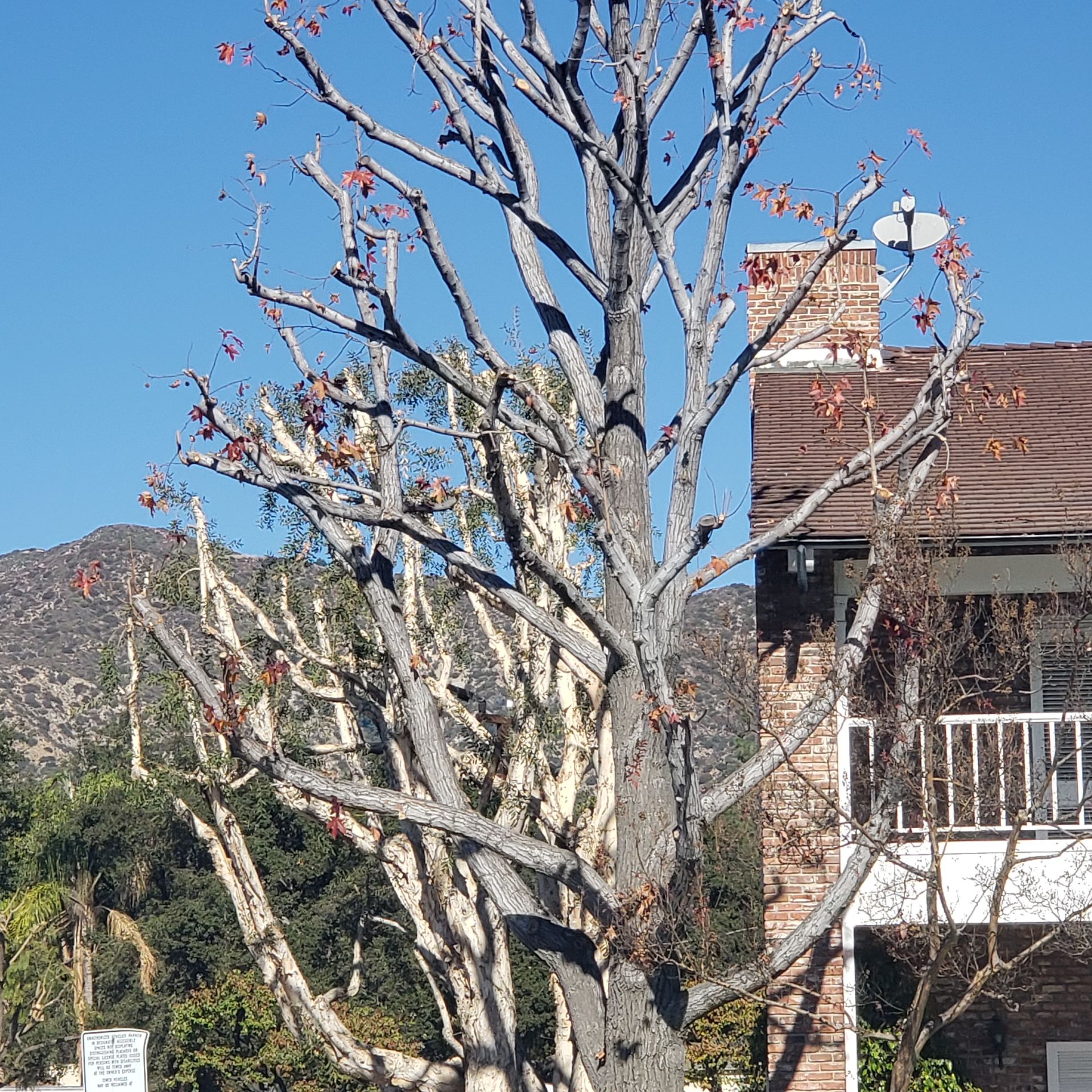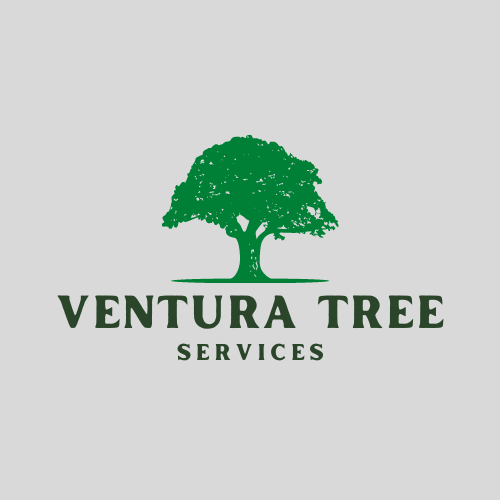COMMERCIAL TREE SERVICES
Call For a Free Quote or to Make An Appointment Now:
805-519-8881
(Click to Call on Mobile Device)
Commercial Tree Care Services:
Ensuring Safety and Landscape Health

Maintaining healthy trees on commercial properties requires expertise and regular care that goes beyond basic landscaping. Neglecting tree health can lead to safety hazards, property damage, and decreased curb appeal. Commercial tree care services ensure proper pruning, disease management, and safety inspections to protect both the trees and the surrounding environment.
Businesses face unique challenges due to the size, traffic, and usage of their outdoor spaces. Professional tree care helps address these challenges by promoting sustainable growth while minimizing risks, which benefits both the business operations and public safety.
Investing in routine commercial tree care supports property value and regulatory compliance. Without specialized attention, trees can quickly become liabilities instead of assets, making these services essential for long-term landscape management.
Understanding the Importance of Commercial Tree Care
Proper tree care directly impacts the physical condition and usability of commercial properties. It influences economic factors and environmental health, affecting both people and the surrounding ecosystem.
Enhancing Property Value
Healthy, well-maintained trees increase a commercial property's curb appeal. This improvement can attract clients, customers, and tenants, raising demand and potential rental income.
Strategically placed trees may reduce energy costs by providing shade and wind protection. This can lower heating and cooling expenses over time, contributing to operational savings.
Neglected or damaged trees, however, may decrease a property's value. Risks of falling branches or disease can signal poor maintenance to potential buyers or lessees. Regular care ensures trees remain assets rather than liabilities.
Ensuring Customer and Employee Safety
Trees in poor health or improperly maintained pose safety hazards. Falling limbs or unstable trees can injure employees, customers, or passersby, exposing businesses to liability.
Routine inspections and pruning identify weak branches and disease early. This proactive approach reduces the chance of accidents and costly emergency removals.
Professional care also addresses root issues that can damage sidewalks or parking lots, preventing tripping hazards. Keeping the property safe supports a trustworthy business environment.
Promoting Environmental Sustainability
Commercial tree care supports local ecosystems by maintaining air quality and providing wildlife habitat. Healthy trees absorb pollutants and release oxygen, improving overall environmental conditions.
Proper watering, pruning, and disease control increase tree longevity, maximizing their environmental benefits. This care also prevents the spread of pests to surrounding flora.
By investing in commercial tree maintenance, businesses contribute to urban greening efforts. This can help meet sustainability goals and regulatory requirements for many commercial properties.
Common Challenges in Commercial Tree Management
Commercial tree management demands regular inspections, careful upkeep, and proactive responses to environmental stresses. Addressing these issues effectively requires targeted strategies and expert knowledge to ensure safety, aesthetics, and health of the urban canopy.
Tree Health Assessment and Maintenance
Regular health assessments identify early signs of decay, nutrient deficiencies, and structural weaknesses in trees. Professionals use visual inspections combined with tools like resistographs and soil tests to diagnose problems.
Maintenance includes pruning to remove dead or hazardous limbs, fertilization to address nutrient gaps, and mulching to retain soil moisture. Managing root systems is crucial in commercial settings to prevent damage to sidewalks and underground utilities.
A planned maintenance schedule reduces unexpected failures and helps trees withstand urban stressors such as soil compaction and pollution.
Pest and Disease Management
Commercial trees are vulnerable to specific pests like emerald ash borer and diseases such as Dutch elm disease. Early detection is critical to prevent widespread infestation and costly tree removal.
Integrated pest management (IPM) combines monitoring, biological controls, and targeted chemical treatments when necessary. Regular inspections help identify symptoms such as leaf discoloration, abnormal growth, or bark damage.
Prompt response limits spread and protects surrounding plantings. Using resistant tree species and proper sanitation practices also reduces pest and disease risks.
Storm Damage Mitigation
Storms can cause extensive damage, including broken branches, uprooting, and structural failures. Commercial properties require preventive measures to minimize tree damage and related safety hazards.
Key strategies include selective pruning to reduce wind resistance, cabling for weak limbs, and soil aeration to promote root stability. Risk assessments identify vulnerable trees before storms strike.
Post-storm inspections ensure debris is removed quickly, and compromised trees are treated or removed to prevent future accidents. This approach safeguards property, pedestrians, and operations.
Key Services Offered by Commercial Tree Care Companies
Commercial tree care involves a variety of precise and critical services. Each service addresses specific needs related to tree health, safety, and property management.
Professional Tree Pruning
Professional tree pruning focuses on selectively removing branches to improve tree structure and health. This process helps maintain proper growth patterns and prevents potential hazards.
Pruners target dead, diseased, or crossing branches to reduce the risk of damage during storms. In commercial settings, pruning also enhances visibility, complies with safety regulations, and supports landscape aesthetics.
Specialized techniques such as crown thinning and raising are common. These techniques ensure trees do not interfere with buildings, signage, or utility lines, minimizing operational disruptions.
Tree Removal and Stump Grinding
Tree removal is necessary when a tree poses a risk due to disease, damage, or location. Commercial tree care companies assess stability before removal to ensure safety and legal compliance.
Stump grinding follows removal to eliminate tripping hazards and prepare land for new use. Grinding breaks stumps into chips below ground level, facilitating drainage and future construction or landscaping.
This service usually requires heavy machinery and expert operation to avoid damage to surrounding infrastructure and to comply with environmental regulations.
Emergency Tree Services
Emergency tree services address urgent situations such as storm damage, fallen limbs, or unstable trees. Rapid response helps protect people, property, and operational continuity.
Teams are equipped to evaluate risk immediately and perform safe removal or stabilization. Services may include debris cleanup and preventive measures to reduce future hazards.
Contracts for emergency response are common in commercial agreements, ensuring timely intervention to minimize downtime and liability.
Benefits of Hiring Certified Arborists for Businesses
Certified arborists provide precise care tailored to the specific needs of commercial trees. Their expertise ensures safety, regulatory compliance, and cost efficiency in maintaining healthy landscapes that support business environments.
Expert Knowledge and Experience
Certified arborists have specialized training in tree biology, health, and maintenance techniques. They can accurately diagnose tree diseases, pests, and structural issues that untrained personnel might miss.
Their experience allows them to choose the best treatments, pruning methods, and planting strategies for commercial properties. This expertise helps maximize tree longevity and aesthetic value.
They understand species-specific needs, seasonal timing, and environmental factors. This reduces risks of damage during maintenance and ensures optimal tree growth and safety on business grounds.
Compliance With Local Regulations
Businesses must follow local laws related to tree preservation, removal permits, and environmental protection. Certified arborists are familiar with these regulations in different municipalities.
They assist in securing necessary permits and ensure all tree work meets legal requirements. This minimizes the risk of fines and legal disputes related to improper tree care.
Arborists help maintain records and document treatments, which many jurisdictions require for commercial properties. Their compliance knowledge supports responsible corporate environmental stewardship.
Long-Term Cost Savings
Regular maintenance by certified arborists prevents costly emergency tree removals and repairs. They identify problems early before they require expensive interventions.
Proper pruning and health care extend the lifespan of trees, protecting property values and enhancing curb appeal. This reduces replacement costs over time.
Investing in certified arborist services decreases liability risks from falling branches or unsafe trees. This can lead to lower insurance premiums and fewer legal expenses for businesses.
Best Practices for Routine Commercial Tree Maintenance
Effective tree care requires strategic timing and proper soil management to support healthy growth. Care routines should reflect the changing seasons and focus on maintaining soil conditions that promote root vitality.
Seasonal Care Scheduling
Scheduling tree maintenance according to the seasons ensures optimal health and safety. Pruning is best done in late winter or early spring before new growth starts to minimize stress and disease risk.
Summer requires monitoring for pests and signs of drought stress. Regular irrigation during dry periods is critical. Fall is suitable for fertilizing to help trees build reserves for winter dormancy.
Winter care includes removing dead or hazardous branches to prevent damage from snow or ice. Avoid heavy machinery near roots when the ground is frozen to reduce soil compaction.
Mulching and Soil Management
Mulching supports soil moisture retention, regulates temperature, and reduces weed competition. Apply a 2-4 inch layer of organic mulch, such as wood chips, around the tree base, avoiding direct trunk contact to prevent decay.
Soil testing is necessary to assess nutrient levels and pH balance. Amendments like compost or specific fertilizers can correct deficiencies. Proper aeration helps roots access oxygen and reduces soil compaction.
Consistent monitoring of soil condition supports tree health and helps prevent issues like root rot or nutrient stress. Maintaining soil structure benefits tree stability and longevity.
Emerging Trends in Commercial Tree Care Services
Advancements in equipment and environmental strategies are shaping how commercial tree care is performed. These trends improve efficiency, safety, and environmental impact for property managers and businesses.
Technology Integration
Commercial tree care increasingly relies on technology such as drones, GIS mapping, and data analytics. Drones assist in inspecting tall trees and hard-to-reach areas quickly and safely, reducing the need for manual climbs.
GIS mapping helps create precise tree inventories, supporting better management decisions and maintenance scheduling. Data collected from sensors can monitor tree health indicators like moisture levels and growth rates.
Software platforms now streamline work orders, employee coordination, and customer communication. This integration reduces downtime and increases operational transparency.
Sustainable Landscaping Solutions
Sustainable practices focus on preserving tree health while reducing environmental impact. Techniques like integrated pest management (IPM) target pests selectively, minimizing chemical use.
Soil health is prioritized through aeration, organic mulching, and tailored fertilization plans. These methods enhance root development and resilience to drought or disease.
Native and drought-resistant tree species are preferred in new plantings to lower water demands and support local ecosystems. Sustainable tree care also includes stormwater management strategies to prevent soil erosion and runoff.
